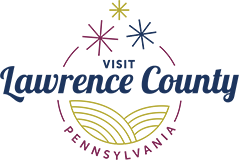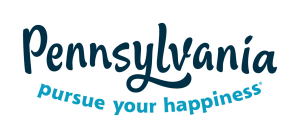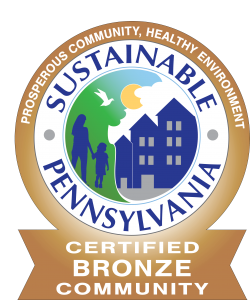2020 ANNUAL DRINKING WATER QUALITY REPORT
New Wilmington Municipal Authority , PWSID #: 6370035
Este informe contiene informaciOn importante acerca de su agua potable. Haga que alguien lo traduzca para usted, o hable con alguien que lo entienda. (This report contains important information about your drinking water. Have someone translate it for you or speak with someone who understands it.)
WATER SYSTEM INFORMATION:
This report shows our water quality and what it means. If you have any questions about this report or concerning your
water utility, please contact New Wilmington Borough office located at 134 High Street between the hours of 8 AM and 4PM Monday through Friday or at 724-946-8167. We want you to be informed about your water supply. If you want to learn more, please attend any of our regularly scheduled meetings. They are held on the 3rd Monday of each month at 7PM at the New Wilmington Borough Office.
SOURCE(S) OF WATER:
Our water source is: The Shenango River and we purchase our water from Aqua Pennsylvania, Inc. of Sharon, PA.
A Source Water Assessment of our source(s) was completed by the PA Department of Environmental Protection (Pa. DEP). A summary report of the Assessment is available on the Source Water Assessment Summary Reports eLibrary web page: www.elibrary.dep.state.pa.us/dsweb/View/Collection-10045. Complete reports were distributed to municipalities, water supplier, local planning agencies and PADEP offices. Copies of the complete report are available for review at the Pa. DEP Northwest Regional Office, Records Management Unit at (814) 332-6899.
| Some people may be more vulnerable to contaminants in drinking water than the general
population. Immuno-compromised persons such as persons with cancer undergoing chemotherapy, persons who have undergone organ transplants, people with HIV/AIDS or other immune system disorders, some elderly, and infants can be particularly at risk from infections. These people should seek advice about drinking water from their health care providers. EPA/CDC guidelines on appropriate means to lessen the risk of infection by Cryptosporidium and other microbial contaminants are available from the Safe Drinking Water Hotline (800-426-4791). |
MONITORING YOUR WATER:
We routinely monitor for contaminants in your drinking water according to federal and state laws. The following tables show the results of our monitoring for the period of January 1 to December 31, 2020. The State allows us to monitor for some contaminants less than once per year because the concentrations of these contaminants do not change frequently. Some of our data is from prior years in accordance with the Safe Drinking Water Act. The date has been noted on the sampling results table.
DEFINITIONS:
Action Level (AL) – The concentration of a contaminant which, if exceeded, triggers treatment or other requirements which a water system must follow.
Maximum Contaminant Level (MCL) – The highest level of a contaminant that is allowed in drinking water. MCLs are set as close to the MCLGs as feasible using the best available treatment technology.
Maximum Contaminant Level Goal (MCLG) – The level of a contaminant in drinking water below which there is no known or expected risk to health. MCLGs allow for a margin of safety.
Maximum Residual Disinfectant Level (MRDL) – The highest level of a disinfectant allowed in drinking water. There is convincing evidence that addition of a disinfectant is necessary for control of microbial contaminants.
Maximum Residual Disinfectant Level Goal (MRDLG) – The level of a drinking water disinfectant below which there is no known or expected risk to health. MRDLGs do not reflect the benefits of the use of disinfectants to control microbial contaminants.
Minimum Residual Disinfectant Level (MinRDL) – The minimum level of residual disinfectant required at the entry point to the distribution system.
Level 1 Assessment— A Level 1 assessment is a study of the water system to identify potential problems and determine (if possible) why total coliform bacteria have been found in our water system.
Level 2 Assessment — A Level 2 assessment is a very detailed study of the water system to identify potential problems and determine (if possible) why an E. coli MCL violation has occurred and/or why total coliform bacteria have been found in our water system on multiple occasions.
Treatment Technique (TT) – A required process intended to reduce the level of a contaminant in drinking water.
Mrem/year = millirems per year (a measure of radiation absorbed by the body)
pCi/L = picocuries per liter (a measure of radioactivity) ppm = parts per million, or milligrams per liter
ppt= parts per trillion, or nanograms per liter ppb = parts per billion, or micrograms per liter
The following table lists contaminants that were detected during 2020 (unless otherwise noted) in your water system. The table provides the level found and the range of detections of regulated contaminants.
DETECTED SAMPLE RESULTS:
| Contaminant | Level Found | Range of Detections | MCL in CCR Units |
MCLG | Sample Date |
Violation Y/N | Sources of Contamination |
| Total Chlorine, ppm | 2.8 | 1.1-2.8 | MRDL=4 | MRDLG=4 | 2020 | N | Water additive
used to control |
| Turbidity % meeting plant performance lever | 99.7% | 99.7-100.0% | TT | NA | 2020 | N | Soil runoff |
| Turbidity, NTU | .20 | .02-.20 | TT | NA | 2020 | N | Soil runoff |
|
|
|||||||
| Barium, ppm | .016 | NA | 2 | 2 | 2020 | N | Discharge of drilling wastes; Discharge from metal refineries, Erosion of natural deposits |
| Chromium, ppm | 2.3 | NA | 100 | 100 | 2020 | N | Discharge from steel and pulp mills; Erosion from natural deposits |
| Fluoride, ppm | .72 | NA | 2 | 2 | 2020 | N | Erosion of natural deposits; Water additive which promotes strong teeth; Discharge from fertilizer and aluminum |
| Synthetic Organic Contaminants |
| Atrazine, ppm | .24 | ND-0.48 | 3 | 3 | 2020 | N | Runoff from herbicide used on row crops |
| Contaminants | Level Found | Range of Detections | MCL | MCLG | Sample Date | Violation Y/N | Major Sources in Drinking Water |
| Disinfection Byproducts– For Haloacetic Acids and Total Trihalomethanes, the Level Found is the highest annual average of the quarterly averages. Compliance is based on a running annual average of quarterly results, not a single sample. The Range of Results lists the highest and lowest values among all individual samples. | |||||||
| Haloacetic acids, ppb | 22.9 | 2.5-40.0 | 60 | NA | 2020 | N | Byproduct of drinking water chlorination |
| Total Trihalo-methanes, ppb | 45.8 | 19.5-66.2 | 80 | NA | 2020 | N | Byproduct of drinking water chlorination |
| Chlorite, ppm
(distribution system) |
.39 | ND-.55 | 1 | .8 | 2020 | N | Byproduct of drinking water chlorination |
| Chlorite, ppm
(entry point) |
1.23 | ND-1.23 | 1 | .8 | 2020 | N | Byproduct of drinking water chlorination |
Purchased Water from Shenango Valley Division- PWSID# PA6430054
| Entry Point Disinfectant Residual |
| Contaminant | Minimum Level Found | Lowest Disinfectant Residual Detected |
Range of Detections | Sample Date |
Violation Y/N | Sources of Contamination |
| Total Chlorine, ppm | 0.99 | .2 | .99-3.40 | 2020 | N | Water additive used to control microbes. |
| Chlorine Dioxide, ppm (entry point) | ND* | .2 | ND-.17 | 2020 | N | Water additive used to control microbes. |
*Chlorine Dioxide used for pre-oxidation, not disinfection.
| Lead and Copper | |||||||||||
| Contaminant | 90th Percentile Value | Total Number of Samples | Samples Exceeding Action Level
|
Action
Level |
MCLG | Sample Date | Violation Y/N | Sources of Contamination |
|||
| Copper, ppm | .09 | 22 | 0 | 1.3 | 1.3 | 2019 | N | Corrosion of household plumbing |
|||
| Lead, ppb | ND
|
22 | 0 | 1.5 | 0 | 2019 | N | ||||
| Total Organic Carbon (TOC) | |||||||
| Range of % | Number of | ||||||
| Removal | Range of percent | quarters out of | Sample Date | Violation | Sources of | ||
| Contaminant | Required | removal achieved | compliance | Y/N | Contamination | ||
| TOC | 35 – 45 | 31.4 – 50.0 | 0 | 2020 | N | Naturally present in the environment | |
The 1996 amendments to the Safe Drinking Water Act (SDWA) require that once every 5 years, the U.S. Environmental Protection Agency (EPA) issue a new list of no more than 30 unregulated contaminants to be monitored by public water systems (PWS). The Unregulated Contaminant Monitoring Rule (UCMR) provides EPA and other interested parties with scientifically valid data on the occurrence of contaminants in drinking water. These data serve as a primary source of occurrence and exposure information that the agency uses to develop regulatory decisions. If a PWS monitoring for UCMR4 finds contaminants in its drinking water, it must provide the information to its customers in this annual water quality report. Below is a table of the results of our UCMR4 monitoring in 2018. All other contaminants tested during UCMR4 were Not Detected.
| Unregulated Contaminants Detected During 2018 | |||
| Unregulated Contaminant | Average Detection | Range of Detections | MCL |
| Raw Samples (untreated) | |||
| Bromide, ppb | 13.9 | ND – 27.8 | NA |
| Total Organic Carbon, ppb | 5555 | 3800 – 7310 | NA |
| Entry Point Samples | |||
| Manganese, ppb | 1.27 | 0.7 – 1.83 | NA |
| Distribution Samples | |||
| Bromochloroacetic acid, ppb | 2.45 | 2.21 – 3.29 | NA |
| Bromodichloroacetic acid, ppb | 4.80 | 4.64 – 5.03 | NA |
| Dichloroacetic acid, ppb | 31.08 | 25.4 – 41.0 | NA |
| Trichloroacetic acid, ppb | 61.2 | 58.3 – 63.6 | NA |
| Unregulated Contaminants Detected During 2019 |
| Unregulated Contaminant | Average Detection | Range of Detections | Health Advisory | Violation |
| Entry Point Samples |
| Perfluorooctanoic acid
(PFOA), ppt |
2.8 | NA | 70 | No |
EDUCATIONAL INFORMATION:
The sources of drinking water (both tap water and bottled water) include rivers, lakes, streams, ponds, reservoirs, springs and wells. As water travels over the surface of the land or through the ground, it dissolves naturally-occurring minerals and, in some cases, radioactive material, and can pick up substances resulting from the presence of animals or from human activity. Contaminants that may be present in source water include:
Microbial contaminants, such as viruses and bacteria, which may come from sewage treatment plants, septic systems, agricultural livestock operations, and wildlife.
- Inorganic contaminants, such as salts and metals, which can be naturally-occurring or result from urban stormwater run-off, industrial or domestic wastewater discharges, oil and gas production, mining, or farming.
- Pesticides and herbicides, which may come from a variety of sources such as agriculture, urban stormwater runoff, and residential uses.
- Organic chemical contaminants, including synthetic and volatile organic chemicals, which are by-products of industrial processes and petroleum production, and can also come from gas stations, urban stormwater runoff, and septic systems.
- Radioactive contaminants, which can be naturally-occurring or be the result of oil and gas production and mining activities.
In order to ensure that tap water is safe to drink, EPA and DEP prescribes regulations which limit the amount of certain contaminants in water provided by public water systems. FDA and DEP regulations establish limits for contaminants in bottled water which must provide the same protection for public health.
Drinking water, including bottled water, may reasonably be expected to contain at least small amounts of some contaminants. The presence of contaminants does not necessarily indicate that water poses a health risk. More information about contaminants and potential health effects can be obtained by calling the Environmental Protection Agency’s Safe Drinking Water Hotline (800-426-4791).
Information about Lead
If present, elevated levels of lead can cause serious health problems, especially for pregnant women and young children. Lead in drinking water is primarily from materials and components associated with service lines and home plumbing. New Wilmington Borough Authority is responsible for providing high quality drinking water, but cannot control the variety of materials used in plumbing components. When your water has been sitting for several hours, you can minimize the potential for lead exposure by flushing your tap for 30 seconds to 2 minutes before using water for drinking or cooking. If you are concerned about lead in your water, you may wish to have your water tested. Information on lead in drinking water, testing methods, and steps you can take to minimize exposure is available from the Safe Drinking Water Hotline or at http://www.epa.gov/safewater/lead.




